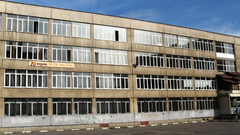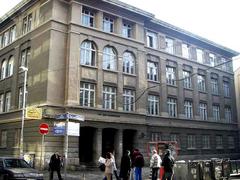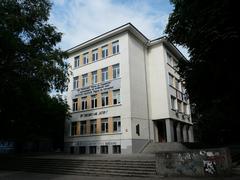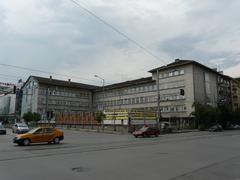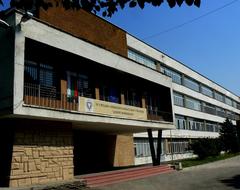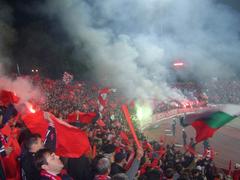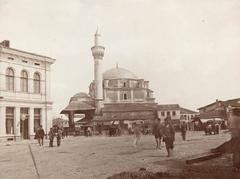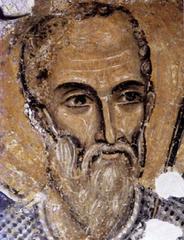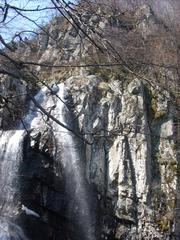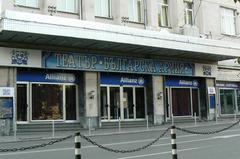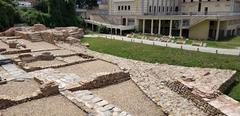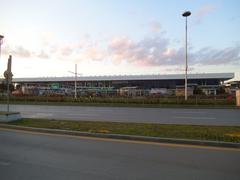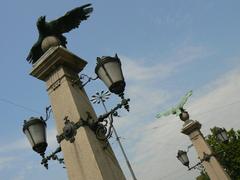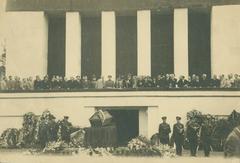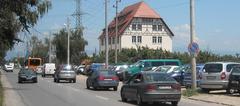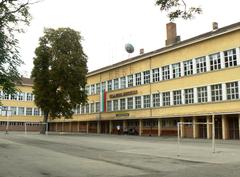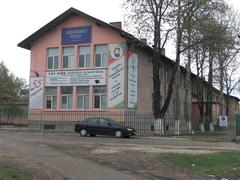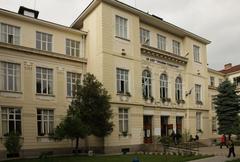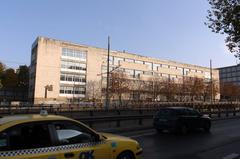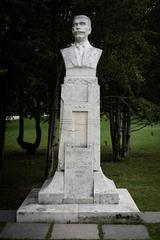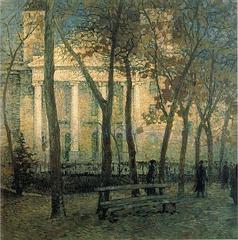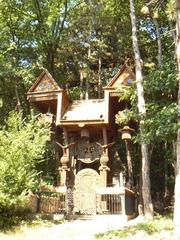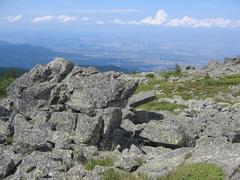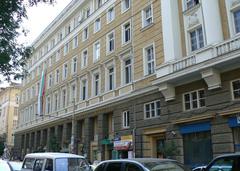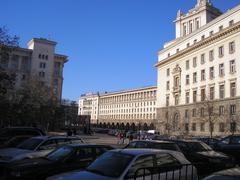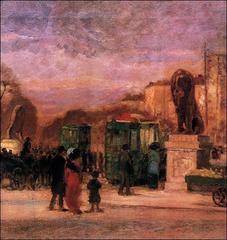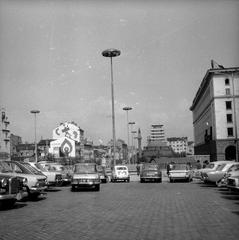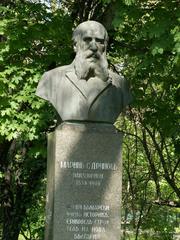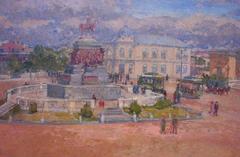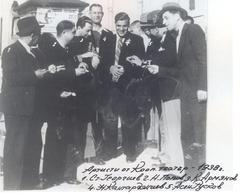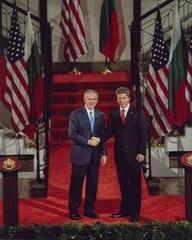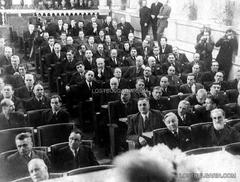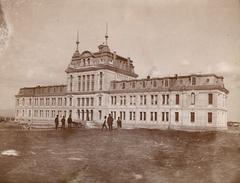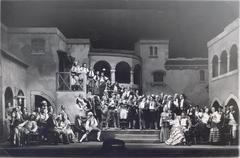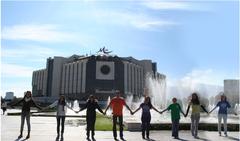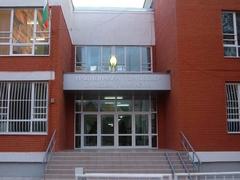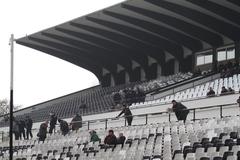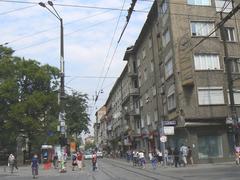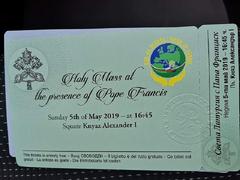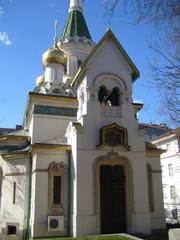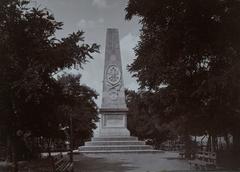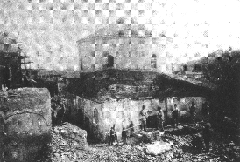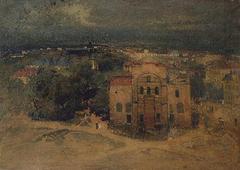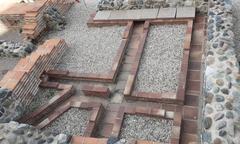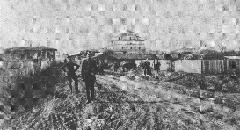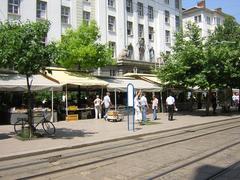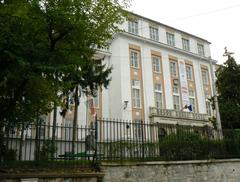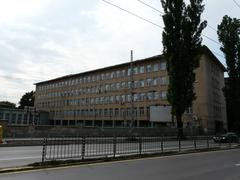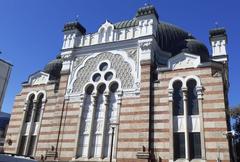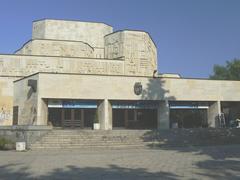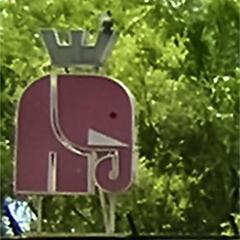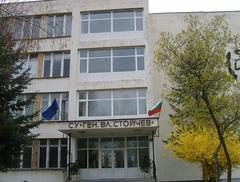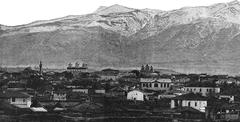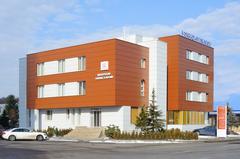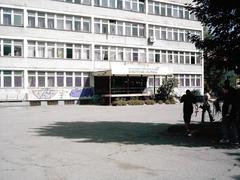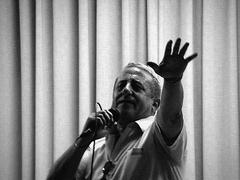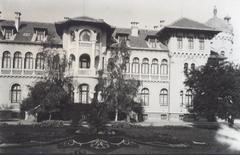Hristo Botev Monument in Sofia: Visiting Hours, Tickets, and Complete Guide
Date: 14/06/2025
Introduction
Standing as a powerful symbol of Bulgaria’s national spirit, the Hristo Botev Monument in Sofia commemorates one of the nation’s most celebrated figures—a revolutionary, poet, and enduring icon of freedom. Hristo Botev’s legacy is immortalized both through his literary contributions and his ultimate sacrifice during the fight for Bulgaria’s independence. Located in the tranquil Borisova Gradina Park, this monument serves as a focal point for historical remembrance and cultural pride, accessible to visitors from all walks of life.
This comprehensive guide provides historical context, artistic details, practical visitor information, accessibility insights, and tips for making the most of your visit. Whether you’re a history buff, literature enthusiast, or traveler keen to explore Sofia’s historical landscape, you’ll find everything you need to plan a meaningful visit to the Hristo Botev Monument.
Table of Contents
- Introduction
- Who Was Hristo Botev?
- The Hristo Botev Monument: History and Features
- Artistic Symbolism
- Location, Directions, and Setting
- Visiting Information: Hours, Tickets, and Accessibility
- Practical Tips and Nearby Attractions
- Special Events and Commemorations
- FAQ
- Conclusion
- Sources and Further Information
Who Was Hristo Botev?
Hristo Botev (1848–1876) remains a central figure in Bulgarian history—a poet whose verses inspired generations and a revolutionary leader whose courage shaped the nation’s path to freedom. Born in Kalofer under Ottoman rule, Botev pursued education in Odessa, where he embraced revolutionary ideals. His poetry, marked by themes of patriotism, sacrifice, and justice, continues to resonate in Bulgarian schools and public life. Botev led a volunteer detachment during the April Uprising of 1876, ultimately giving his life in battle. His dual legacy as a literary genius and a martyr for freedom is celebrated across Bulgaria (National Geographic Bulgaria, Wikipedia – Hristo Botev).
The Hristo Botev Monument: History and Features
Historical Background
The monument was unveiled in 1926 in Borisova Gradina, Sofia’s oldest and most revered park. Crafted by the renowned sculptor Andrey Nikolov, the monument features a striking bronze bust of Botev, mounted on a granite pedestal. It was declared a cultural heritage site of local significance in 1955, reflecting its importance in Bulgaria’s collective memory (registersofia.bg).
Artistic Symbolism
The bust is approximately 0.80 meters tall and portrays Botev in formal attire, his head slightly turned to the right—a pose suggesting both resolve and contemplation. The sculptor’s attention to detail captures Botev’s distinctive features: thick, wavy hair, a full beard, and a piercing gaze. The pedestal bears Botev’s autograph (“Хр. Ботйовь”), anchoring his legacy as both a poet and a revolutionary. The monument’s location along the “Alley of Notable Bulgarians” situates Botev among other national luminaries.
Location, Directions, and Setting
Borisova Gradina Park
The monument is set within Borisova Gradina, a lush urban oasis and a prime example of late 19th-century landscape architecture in Sofia. The park offers a peaceful backdrop for reflection and exploration, with the monument being one of several that honor notable Bulgarians (registersofia.bg).
Address and Getting There
- Address: Borisova Gradina Park, Alley of Notable Bulgarians, Sofia, Bulgaria
- GPS Coordinates: 42.6833° N, 23.3333° E (approximate)
- Public Transport:
- Metro: Vasil Levski Stadium station (easy access to park entrance)
- Bus/Tram: Multiple lines serve the area
- Parking: Limited parking near park entrances; public transport is recommended
- On Foot: The monument is within walking distance from Sofia University and the National Stadium
Visiting Information: Hours, Tickets, and Accessibility
- Visiting Hours: The monument is outdoors and accessible year-round, typically from 6:00 AM to 10:00 PM in line with park hours. No restrictions apply to viewing the monument.
- Tickets: Free entry; no tickets required.
- Accessibility: The site features paved walkways suitable for wheelchairs and strollers. Benches, restrooms, and cafes are nearby.
- Guided Tours: Many local tour operators and the Sofia Tourism Information Center offer walking tours that include the monument, especially during national holidays or themed routes (About Sofia).
Practical Tips and Nearby Attractions
- Best Time to Visit: Spring and early summer (April–June) offer pleasant weather and vibrant greenery. June 2nd, the Day of Botev and the Heroes Who Died for Bulgaria’s Freedom, features special ceremonies but larger crowds.
- Photography: Allowed and encouraged; the monument’s setting provides excellent photo opportunities.
- Facilities: Benches, restrooms, and playgrounds are available in Borisova Gradina.
- Language: Bulgarian is official; English is widely spoken in tourist areas.
- Currency: Bulgarian lev (BGN); the monument visit is free, but nearby cafes and museums may charge in BGN.
Nearby Attractions
- Sofia History Museum: Offers insights into the city’s past (registersofia.bg).
- Alexander Nevsky Cathedral: Iconic Orthodox cathedral nearby.
- Vasil Levski National Stadium: Major sports and event venue.
- Vitosha Boulevard: Main shopping and dining pedestrian street.
Special Events and Commemorations
June 2nd – Botev Day: Annually, at 12:00 noon, sirens sound across Bulgaria. Citizens and officials gather at the monument to lay flowers and observe two minutes of silence in Botev’s honor. Poetry readings and cultural events often accompany the commemoration (National Geographic Bulgaria).
FAQ
Q: Is there an entrance fee?
A: No, visiting the monument is free.
Q: What are the opening hours?
A: The monument is accessible during Borisova Gradina’s park hours (6:00 AM to 10:00 PM), year-round.
Q: Is the monument wheelchair accessible?
A: Yes, paved paths provide easy access for wheelchairs and strollers.
Q: Are guided tours available?
A: Yes, book through local operators or the Sofia Tourism Information Center.
Q: Can I visit on June 2nd?
A: Yes, but expect larger crowds due to official commemorations.
Q: Can I take photos?
A: Absolutely—photography is encouraged.
Conclusion
The Hristo Botev Monument is more than a historical landmark; it’s a living symbol of Bulgaria’s enduring quest for freedom, justice, and cultural identity. Its serene location in Borisova Gradina, artistic significance, and accessibility make it a highlight for any Sofia itinerary. Whether visiting as part of a city tour or on a day of national remembrance, the monument invites reflection on Bulgaria’s past and inspiration for its future.
For an enriched experience, consider using the Audiala app for audio guides and interactive maps, and plan to explore nearby historical sites for a deeper understanding of Sofia’s vibrant heritage.
